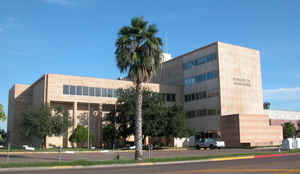Texas Counties
Texas is divided into two hundred and fifty-four counties, more than any other state. Texas was originally divided into municipalities, a unit of local government under Spanish and Mexican rule. When the Republic of Texas gained its independence in 1836, there were 23 municipalities, which became the original Texas counties. Many of these would later be divided into new counties. The most recent county to be created was Kenedy County in 1921. The most recent county to be organized was Loving County in 1931Hidalgo County, Texas
Hidalgo County Education, Geography, and History

Hidalgo County is a county in the state of Texas. Based on the 2010 census, the population was 774,769, making it the eighth-most populous
county in Texas. The county seat is Edinburg, while the largest city is McAllen. The county is named for Miguel Hidalgo y Costilla, the priest
who raised the call for Mexico's independence from Spain.
Hidalgo County is also designated by the US Census Bureau as the McAllen-Edinburg-Mission Metropolitan Statistical Area. It is located in
the Rio Grande Valley of South Texas
Etymology - Origin of Hidalgo County Name
Miguel Hidalgo y Costilla, the priest who raised the call for Mexico's independence from Spain
Demographics:
County QuickFacts: CensusBureau Quick Facts
Hidalgo County History
Hidalgo County is a county located in the US state of Texas. It is named for Miguel Hidalgo y Costilla, the priest who raised the call for Mexico's independence from Spain. The seat of the county is Edinburg, while the largest city is McAllen.
Handbook of Texas Online
Hidalgo County was formed in 1852 and named for Miguel Hidalgo y Costilla,
who gave the "cry for Mexican independence" from Spanish rule. By 1852 the county had between forty and forty-five
ranches. As land was parceled out from one generation to the next the ranches located along the river developed into
villages. In this way, ranches gave rise to the communities of La Habitaci?, Relampago, and Pe?tas. Ranches away
from the river included Laguna Seca Ranch, founded in 1867, Mora Rel?pago Ranch (1875), and San Manuel Ranch
(1876). Generally, inhabitants of the area, especially those in the north, made a living by stock raising, while
those along the river were involved in transportation, agriculture, and trade with Mexico. In 1852 La Habitaci? was
renamed Edinburgh and made county seat. The first county court convened on September 2, 1852, and as its first act
issued licences to ferries at Hidalgo, San Luis, Pe?tas, and Las Cuevas. Jos?M. J. Carbajal
was an early court reporter. County residents were isolated from each other, however, and from the population center
of Brownsville in neighboring Cameron County. Because of their sense of neglect by state and federal governments,
residents adopted the name "Republic of Hidalgo." Isolation and ineffective law enforcement led to general chaos and
lawlessness, mostly in the form of cattle raids and shootouts. The "Cortina Wars" also caused disturbances,
especially when Juan Nepomuceno Cortina, on his way to a robbery, was
intercepted by a force of Texas Rangers. The skirmish known as the battle of La
Bolsa occurred on February 4, 1860, in El Zacatal, south of Progreso in southeast Hidalgo County. Despite
difficulties, ranching dominated the economy in 1860, when 10,695 cattle and 3,330 sheep were counted; the latter
produced 10,900 pounds of wool. Rustling also thrived. As early as December 28, 1862, armed Mexican bandits crossed
into Los Ebanos, captured a Confederate wagontrain, and killed three teamsters. At other times Mexican cattle
rustlers would cross into Texas with the purpose of stealing as many cattle as possible. Hidalgo County did not
prosper from the Civil War as did Cameron County, but instead found itself
battling cattle rustlers, who were joined by both Union and Confederate deserters. In 1870 rustlers were attracted
to a county with 18,141 cattle and 11,270 sheep and a population of only 2,387. From 1872 to 1875 Sheriff Alex J.
Leo repeatedly wired Washington requesting troops to curtail cattle rustling and end the "Cattle Wars," but his
efforts were in vain. On April 2, 1875, Capt. Leander H. McNelly and a band of
Texas Rangers arrived to help More at
Alicia A. Garza, "HIDALGO COUNTY," Handbook of Texas Online (http://www.tshaonline.org/handbook/online/articles/hch14),
accessed January 24, 2016. Uploaded on June 15, 2010. Published by the Texas State Historical Association.
Geography: Land and Water
As reported by the Census Bureau, the county has a total area of 1,583 square miles (4,099 km2), of which,
1,570 square miles (4,066 km2) of it is land and 13 square miles (33 km2) of it (0.82%) is water.
Neighboring Counties
Bordering counties are as follows:
- Brooks County (north)
- Kenedy County (northeast)
- Willacy County (east)
- Cameron County (east)
- Starr County (west)
- Ciudad Gustavo Diaz Ordaz, Tamaulipas, Mexico (south)
- Matamoros, Tamaulipas, Mexico (south)
- Reynosa, Tamaulipas, Mexico (south)
- R? Bravo, Tamaulipas, Mexico (south)
Education
The 15 school districts serve Hidalgo County
In addition, the county is served by the multi-county South Texas Independent School District. The Catholic Diocese of Brownsville operates
three PK-8th Grade schools, two lower-level elementary schools and two high schools.
The Edinburg campus of the University of Texas Rio Grande Valley (formerly University of Texas-Pan American)is located in Hidalgo County,
which along with neighboring Starr County is part of the South Texas College.







